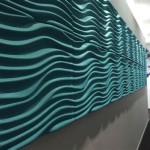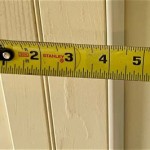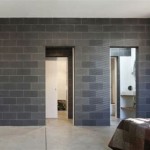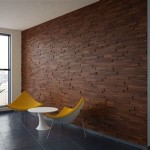```html
Interior Design Photography Ideas
Interior design photography plays a crucial role in showcasing the aesthetic appeal, functionality, and overall atmosphere of a space. High-quality images can effectively communicate the designer’s vision to potential clients, highlight architectural details, and ultimately drive business. Mastering the art of interior design photography requires a strategic approach, encompassing technical skills, an understanding of design principles, and a keen eye for detail.
The purpose of interior design photography varies but commonly serves to document projects for portfolio development, marketing materials, publication submissions, and online platforms. The images should accurately represent the space while simultaneously creating an inviting and aspirational visual experience for the viewer.
Optimizing Composition for Interior Spaces
Composition is fundamental to any photograph, but it holds particular significance in interior design photography. The goal is to guide the viewer's eye through the space, highlighting key features and creating a sense of depth and proportion. Several techniques contribute to effective composition.
Firstly, the use of leading lines can draw the viewer into the photograph and connect different elements within the space. These lines can be architectural features like hallways, staircases, or even furniture arrangements. Positioning the camera strategically to emphasize these lines is crucial. For instance, shooting down a hallway from a point that emphasizes its length creates a sense of depth and invites the viewer to explore the space.
Secondly, the rule of thirds provides a framework for arranging elements within the frame. Dividing the image into nine equal parts with two horizontal and two vertical lines, positioning key elements along these lines or at their intersections, generates a more balanced and visually appealing composition. This technique can be applied to furniture placement, artwork, or even the placement of windows within the frame. Avoiding centering everything in the frame is essential for creating dynamic and engaging images.
Thirdly, consider the use of symmetry. While the rule of thirds promotes asymmetry, symmetrical compositions can be highly effective in certain situations, particularly when highlighting architectural features or creating a sense of formality. However, symmetry should be used judiciously to avoid creating a static or predictable image. Introducing subtle variations within a symmetrical composition, such as slightly different accessories on either side of a fireplace, can add visual interest.
Fourthly, pay attention to foreground, middle ground, and background. Creating a sense of depth is essential for conveying the spatial qualities of an interior. Including elements in the foreground, such as a coffee table or a decorative object, can create a sense of intimacy and invite the viewer into the scene. The middle ground should feature the primary elements of the design, such as furniture groupings or architectural details. The background provides context and can be used to create atmosphere. Avoiding clutter in the background is crucial for maintaining focus on the primary subject.
Finally, consider negative space. Leaving empty space around the subject can help to emphasize its importance and create a sense of balance. Negative space can also be used to create a feeling of calm and serenity, particularly in minimalist interiors.
Mastering Lighting Techniques for Interior Photography
Lighting is arguably the most critical element in interior design photography. Effective lighting can enhance the textures, colors, and overall mood of a space. Understanding the different types of lighting and how to control them is essential for creating high-quality images.
Natural light is often the most desirable source of illumination for interior photography. It creates a soft, natural look that is difficult to replicate with artificial lighting. However, natural light can be unpredictable and may not always be sufficient to illuminate the entire space. Shooting during the "golden hours" – the hour after sunrise and the hour before sunset – can provide warm, flattering light. Diffusing harsh sunlight with sheer curtains or reflectors can help to create a more even and balanced illumination. It's important to note the direction of the light and how it affects the shadows and highlights within the space.
Artificial lighting, including lamps, overhead fixtures, and strobes, can be used to supplement natural light or to create a specific mood. When using artificial lighting, it is essential to pay attention to color temperature. Mixing different color temperatures can create an unnatural and unflattering look. Using consistent color temperature throughout the space, or intentionally creating contrast with different color temperatures, is important. For example, warming up a photograph to convey a cozy feeling. For strobe lighting, it is generally best to use multiple lights to create even illumination and avoid harsh shadows. Bouncing light off walls and ceilings can soften the light and create a more natural look.
Balancing natural and artificial light is a key skill in interior design photography. The goal is to create a seamless blend of the two, so that the lighting appears natural and balanced. This can be achieved by adjusting the exposure settings on the camera and by using reflectors or diffusers to control the light. Using HDR (High Dynamic Range) photography can also help to balance exposure levels across the entire frame. HDR involves taking multiple photographs at different exposure levels and then combining them in post-processing to create a single image with a wider dynamic range.
Furthermore, attention must be paid to reflections. Mirrors, windows, and glossy surfaces can create distracting reflections that detract from the overall composition. Repositioning the camera or using a polarizing filter can help to minimize reflections. Also consider light spill, where light is leaking through a window or doorway and creating a distracting glow. Masking and blending in post-processing is often necessary to correct these types of issues.
Essential Equipment and Post-Processing Techniques
While a skilled photographer can achieve impressive results with basic equipment, certain tools are essential for producing professional-quality interior design photographs. A full-frame camera with a wide-angle lens is generally recommended. A wide-angle lens allows the photographer to capture more of the space in a single frame, which is essential for showcasing the overall layout and design. Tilt-shift lenses are also particularly useful in interior photography, as they allow the photographer to correct perspective distortion and keep vertical lines straight.
A sturdy tripod is essential for achieving sharp, blur-free images, especially in low-light conditions. A remote shutter release can also help to prevent camera shake when taking long exposures. External flashes and strobes are necessary for supplementing natural light and creating a specific mood. Reflectors and diffusers are used to control the light and create a more even and balanced illumination.
Post-processing is an integral part of the interior design photography workflow. Software such as Adobe Lightroom and Photoshop provide a range of tools for adjusting exposure, color balance, contrast, and sharpness. Perspective correction is a crucial post-processing step, as it helps to ensure that vertical lines are straight and that the image appears natural. Retouching can be used to remove distracting elements, such as blemishes or reflections. However, it is important to avoid over-retouching, as this can create an unnatural and artificial look. Subtle adjustments are generally more effective than drastic alterations.
Color correction is another essential post-processing step. Ensuring that the colors are accurate and consistent throughout the image is essential for creating a professional and polished look. White balance adjustment is important for correcting any color casts that may have been introduced by the lighting. Selective color adjustments can be used to enhance specific colors within the image, such as the colors of the furniture or artwork. Finally, sharpening is used to enhance the details in the image and create a sense of clarity. However, over-sharpening can create unwanted artifacts, so it is important to use sharpening sparingly.
Beyond standard adjustments, consider content-aware fill tools to remove unwanted objects or imperfections within the frame. This is particularly useful for tidying up cluttered spaces or removing distracting elements from the background. Use these tools judiciously to maintain a natural and realistic look, avoiding excessive manipulation that detracts from the authenticity of the image.
By mastering these techniques and utilizing the appropriate equipment, interior design photographers can create compelling images that effectively communicate the beauty and functionality of interior spaces, ultimately contributing to the success of design projects and businesses.
```
How To Shoot Interior Design Photography 5 Basic But Crucial Tips You Need Know

Impress Your Clients With These Interior Design Photography Tips Dd Reps

80 Gorgeous Living Room Decorating Ideas For Every Style

How To Decorate With Black And White Photography

Picture Perfect Decorate With Black And White Photographs For Exquisite Interiors Decoist

Revamp Your Office With These 9 Ideas For Decorating Photography Workspace Junebug Weddings

Interior Design Photography For Lauren Ramirez E In Downtown San Diego Transitional Living Room By Love Like Harry Houzz

A Contemporary Photography Studio Makeover Daly Digs

How Can You Incorporate Your Art Collection Into Interior Design Plan Tori Sikkema Photography

Interior Home Design With Fine Art Nature Photography Mickey Shannon
Related Posts








